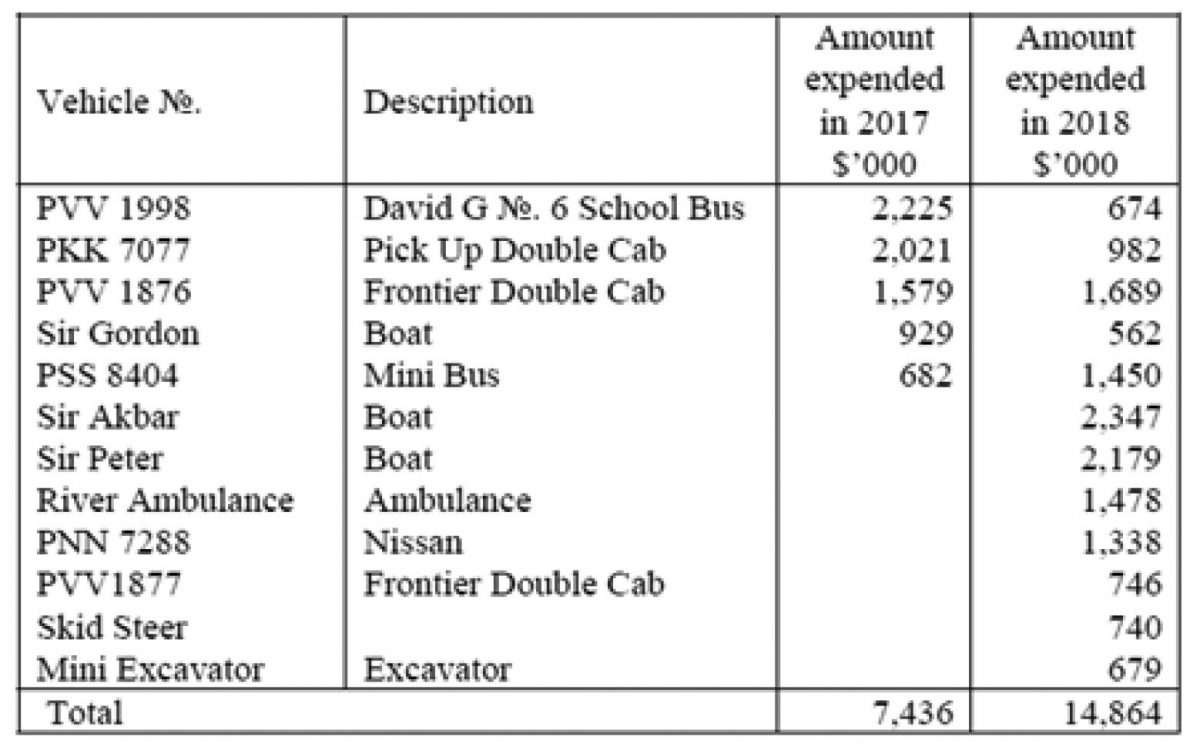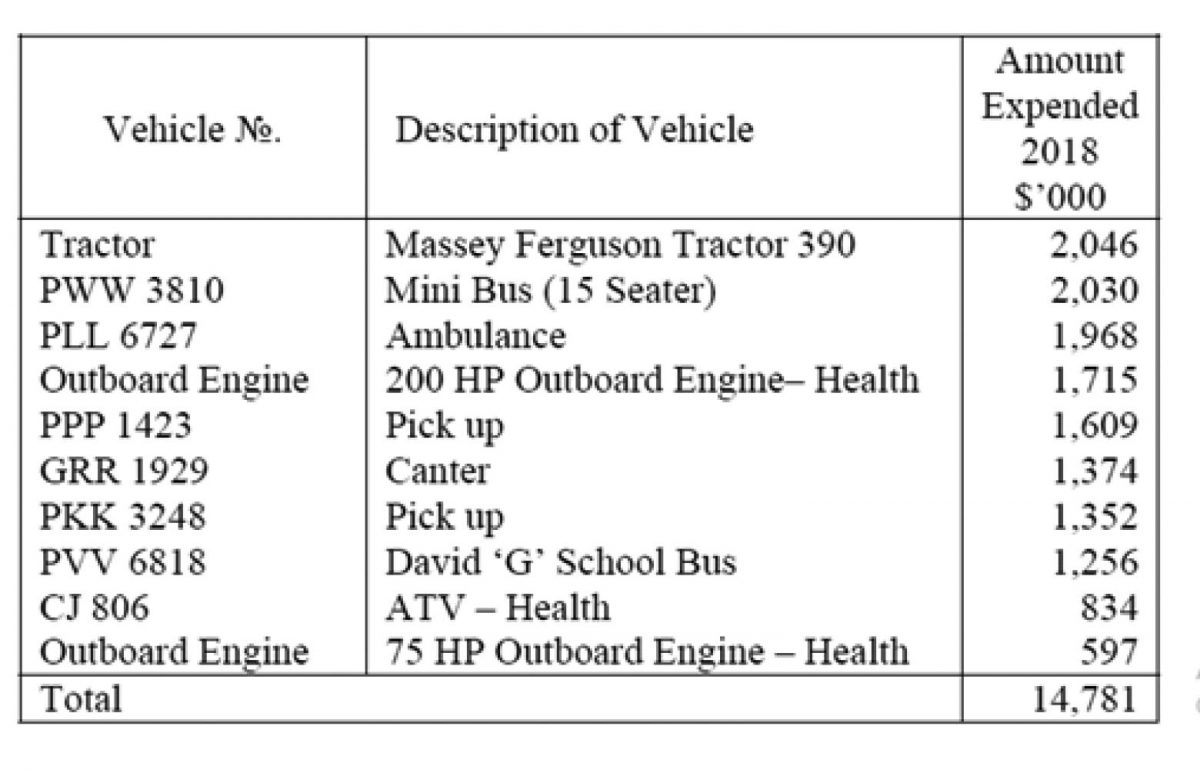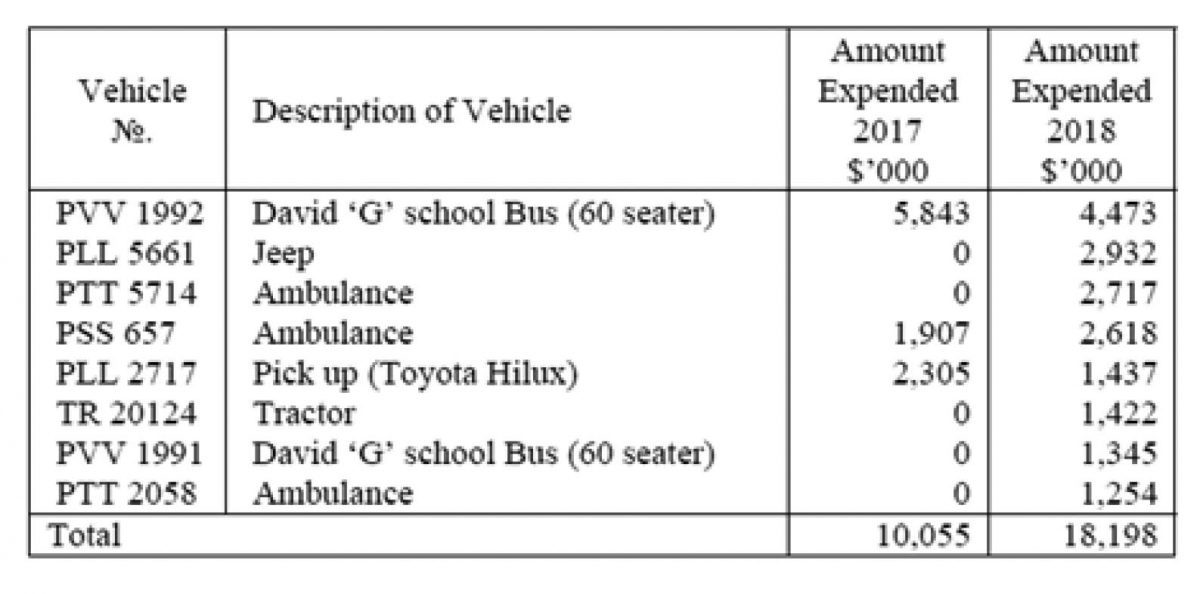The Auditor General’s 2018 report has raised questions about large expenditures on the maintenance of vehicles in the various regions including on some of the buses provided under President David Granger’s transport programme for schoolchildren.
According to the Auditor General’s report in Region 1: Barima/Waini amounts totalling $50.996M were expended on vehicle spares, services and repairs to the Regional Administration fleet of vehicles.
However, historical records were not maintained to monitor the individual cost of repairs and to determine whether it was economical to retain or dispose of these vehicles.
When the Audit Office analyzed these costs it found that 10 of the vehicles had significant maintenance costs amounting to $14.781 million.
Included in this 10 was one David ‘G’ School bus, PVV 6818 which cost the Region $1.256 million in repairs.
Pressed to justify these costs the Regional Executive Officer said only that there is no Mechanical Superintendent or files maintained on each vehicle before committing to taking corrective action once such a person is employed.
The Audit Office has recommended that the Regional Administration monitor closely the maintenance of its fleet of motor vehicles and determine whether it would be more economical to dispose of vehicles that recorded high maintenance costs.
Additionally replaced parts removed from vehicles and equipment when repairs were done by contractors were not returned to the Region’s Stores consequently the auditors were unable to substantiate the payments made for these repairs based on the bills submitted.
In Region 7 – Cuyuni/Mazaruni similar concerns were raised by the Audit Office which noted that amounts totaling $20.319 million were expended for vehicles spares and maintenance for the period under review.
An analysis of vehicles spares and maintenance revealed that 12 vehicles had exceedingly high maintenance costs that amounted to $14.864 million.
This 12 included the David G bus, PVV 1998 which cost the region 674,000 in repairs. Notably this same bus had received $2.225 million in repairs in 2017.
According to the Head of the Budget Agency the age of vehicles and the interior terrain saw the region spend moneys to ensure vehicles and equipment were properly maintained.
The Audit Office has again recommended that the Regional Administration monitor closely the maintenance of its fleet of motor vehicles and determine whether it would be more economical to dispose of vehicles that recorded high maintenance costs.
The largest expense was however recorded in In Region 6: East Berbice/Corentyne where amounts totalling $56.122 million were expended on vehicle spares, services and repairs to the Regional Administration fleet of vehicles.
For the period under review, the Audit Office found that eight vehicles incurred an average of $18.198M in maintenance costs, compared with $24.109M expended on twelve vehicles in the 2017.
It was also noted that three vehicles had excessive maintenance cost in both years one of which was a David G bus.
PPV 1992 which cost the region $5.843 million in 2017 somehow warranted an additional $4.473 million in repairs in 2018.
A second bus, PPV 6818, was not maintained in 2017 but cost the region $1.345 million in 2018.
A further analysis of the Region’s spending revealed that the Regional Administration had also seen excessive maintenance cost in the sum of $2.362M for the repairs and maintenance of eleven motorcycles.
“It was noted that the cost of repairs of three of the said motor cycles exceeded the value for which they were procured,” the report states.
These cycles: CJ 1164, CH 9920 and CH 9921 cost the region $698,000 in maintenance in 2017 and 864,000 in 2018.
According to the Regional Executive Officer the vehicles are required for the provision of essential services by the Regional Administration to all stakeholders and the maintenance of the stated motor cycles will be closely monitored.
The Audit Office in turn has recommended that the Regional Administration monitor closely the maintenance of its fleet of motor vehicles and determine whether it would be more economical to dispose of vehicles that recorded high maintenance costs.







